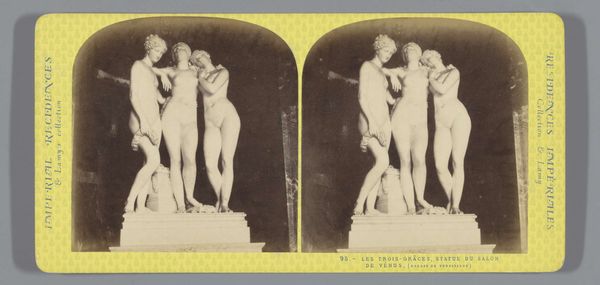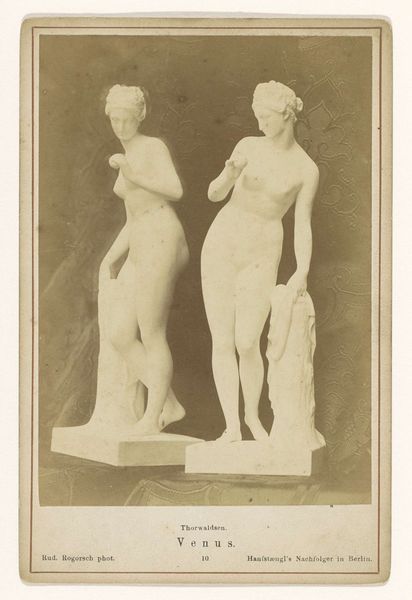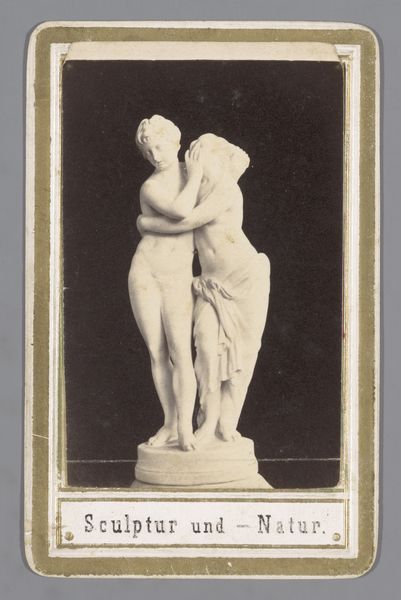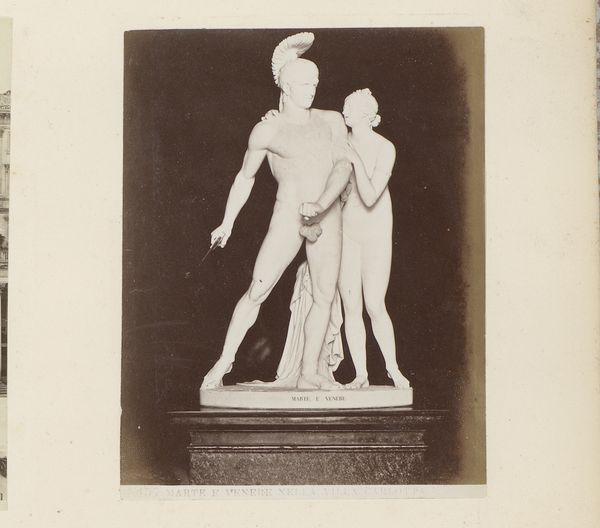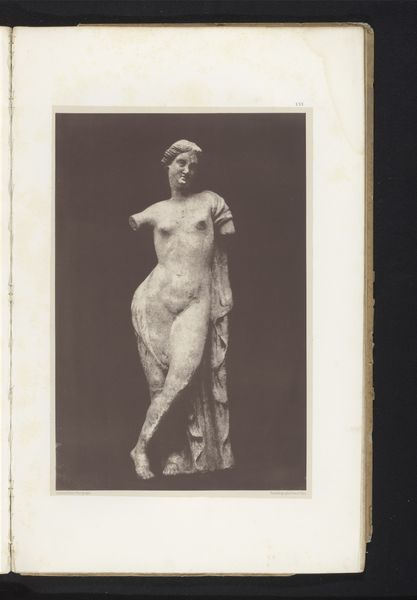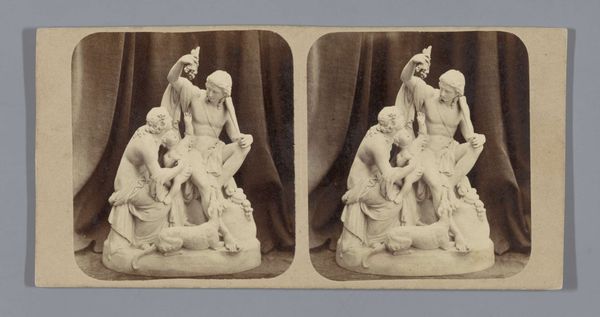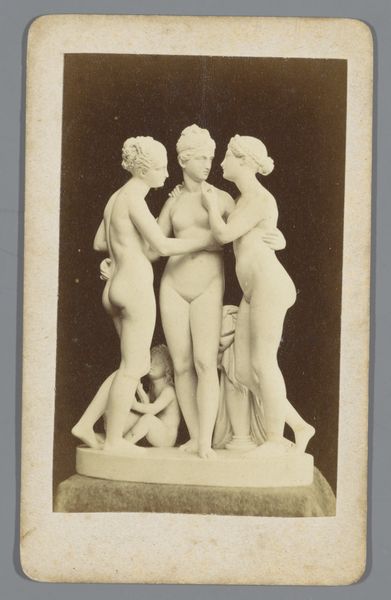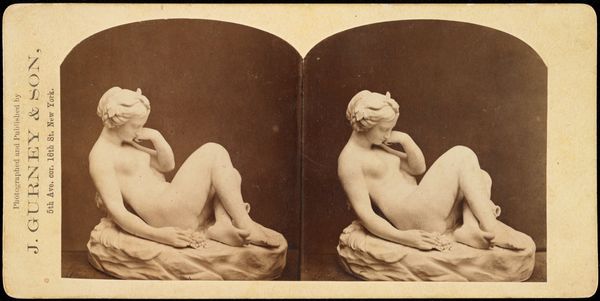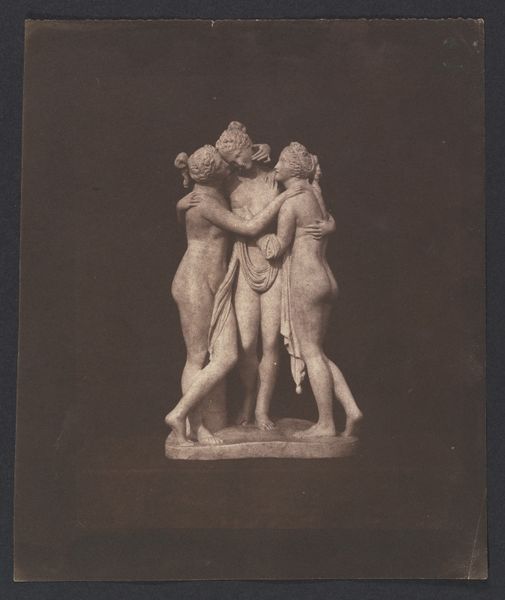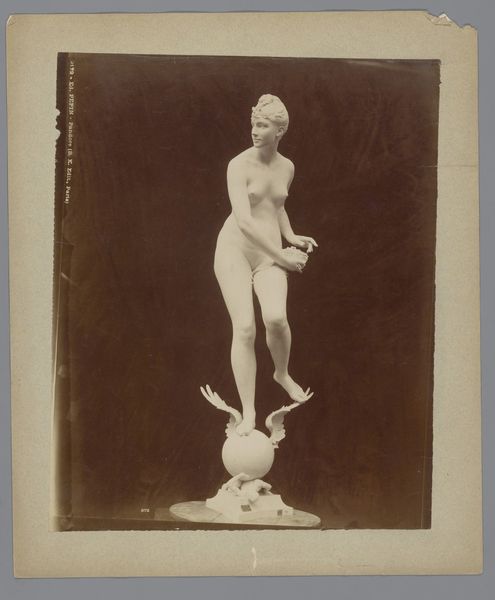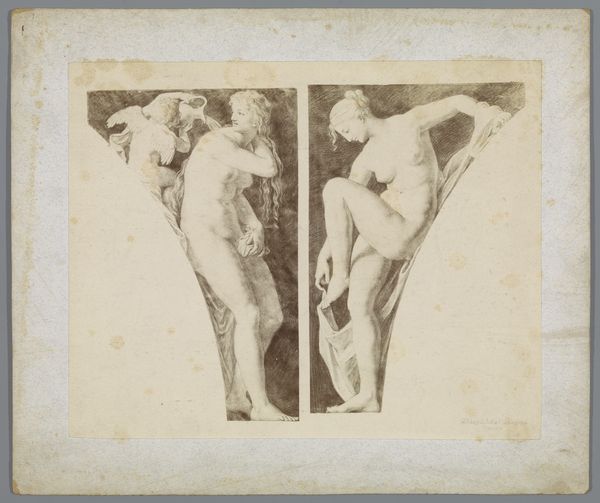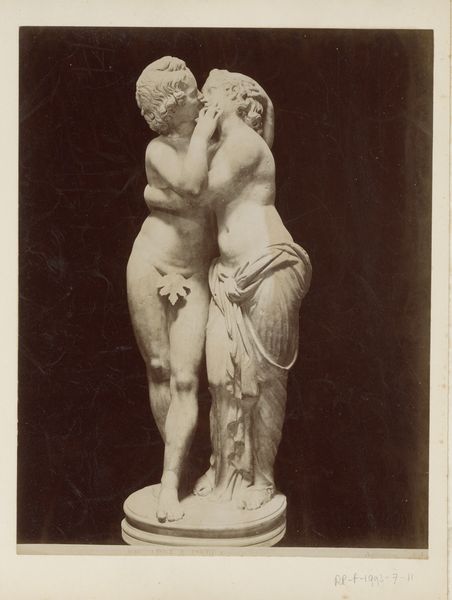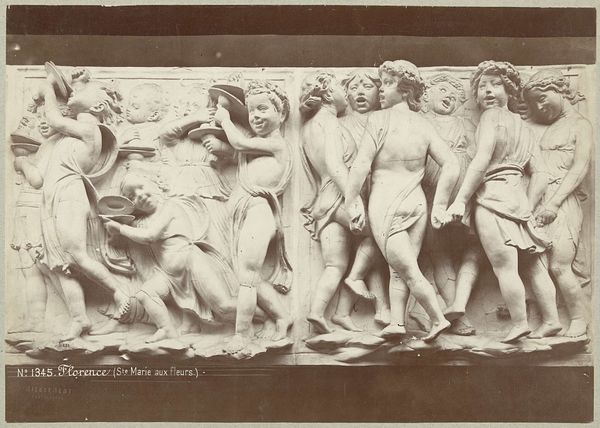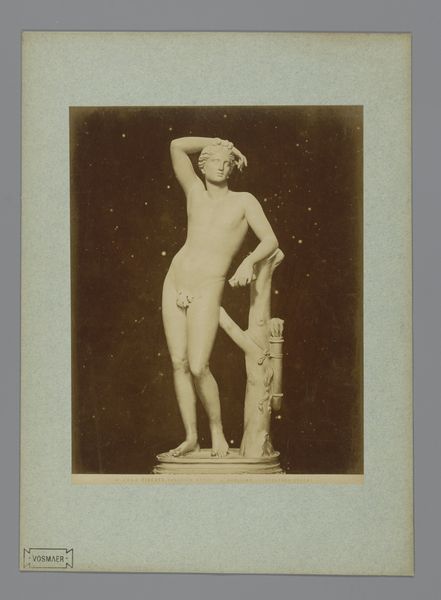
photography, sculpture
#
neoclacissism
#
sculpture
#
greek-and-roman-art
#
figuration
#
photography
#
sculpture
#
nude
Dimensions: height 84 mm, width 173 mm
Copyright: Rijks Museum: Open Domain
Editor: Here we have "Beeldhouwwerk van de drie Gratiën," or Sculpture of the Three Graces, dating from 1857 to 1863. It appears to be a photograph of a sculpture. What strikes me is how the artist captures the smoothness and flowing forms of the figures, even in a monochrome image. How would you interpret the composition and forms in this piece? Curator: Well, focusing on formal elements, observe the grouping of the figures. The arrangement showcases a clear understanding of classical principles: balance, harmony, and idealization. Consider the repeated curves and counter-curves, how one figure leans, supported by another, creating a visually engaging rhythm. The negative space between the figures is almost as important as the figures themselves, creating a dynamic tension. Do you notice how the texture of the sculpture, captured in the photograph, adds another layer of complexity? Editor: Yes, the light seems to emphasize the roundedness of their bodies, and also creates a sense of depth, despite being a two-dimensional photograph. How does the neoclassical style contribute to its meaning? Curator: The Neoclassical style is significant. Think about the revival of classical ideals during this period. The artist seeks to emulate the grace and beauty of ancient Greek and Roman sculpture. This sculpture exemplifies a search for an aesthetic of idealized beauty and form. It suggests an intellectual and artistic aspiration. Note how the bodies, though nude, are presented with a certain restraint and decorum, rather than explicit sensuality. Editor: I see that now. It’s less about individual expression, and more about universal ideals. I really appreciate your insights into the visual balance. Curator: Precisely. Analyzing art through a formalist lens allows us to appreciate the technical skill and intentionality behind the artwork’s construction, regardless of specific cultural contexts or biographical details.
Comments
No comments
Be the first to comment and join the conversation on the ultimate creative platform.
